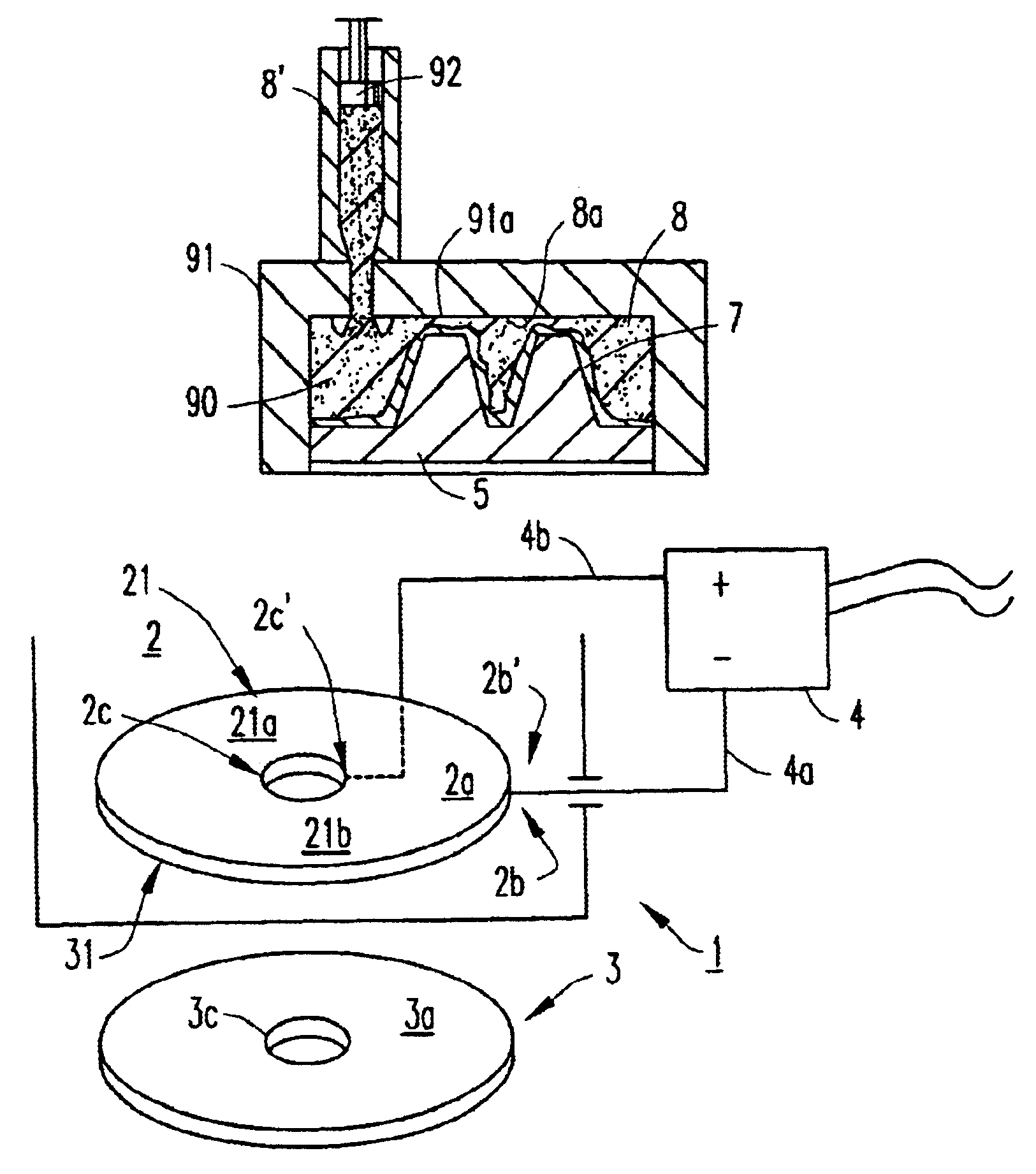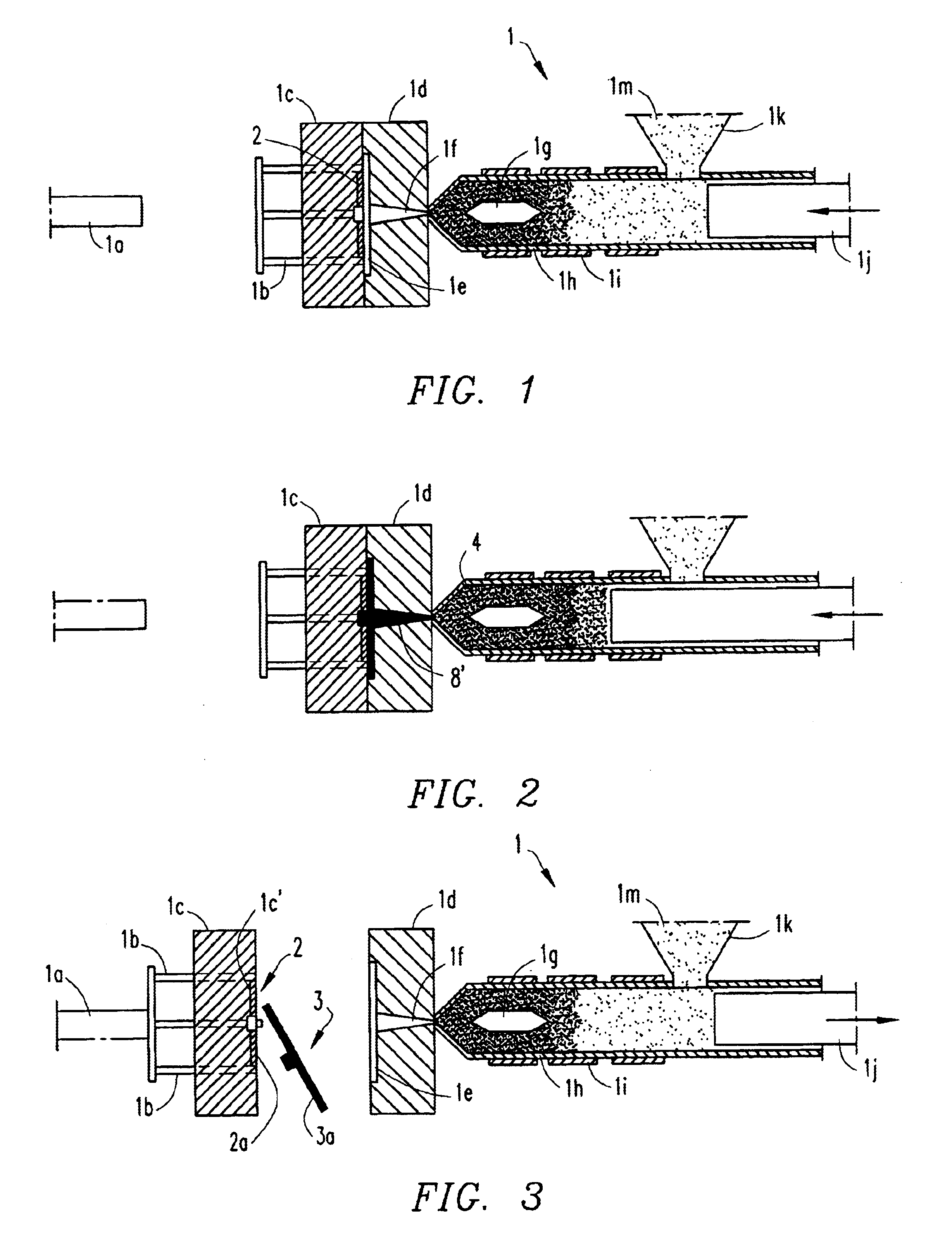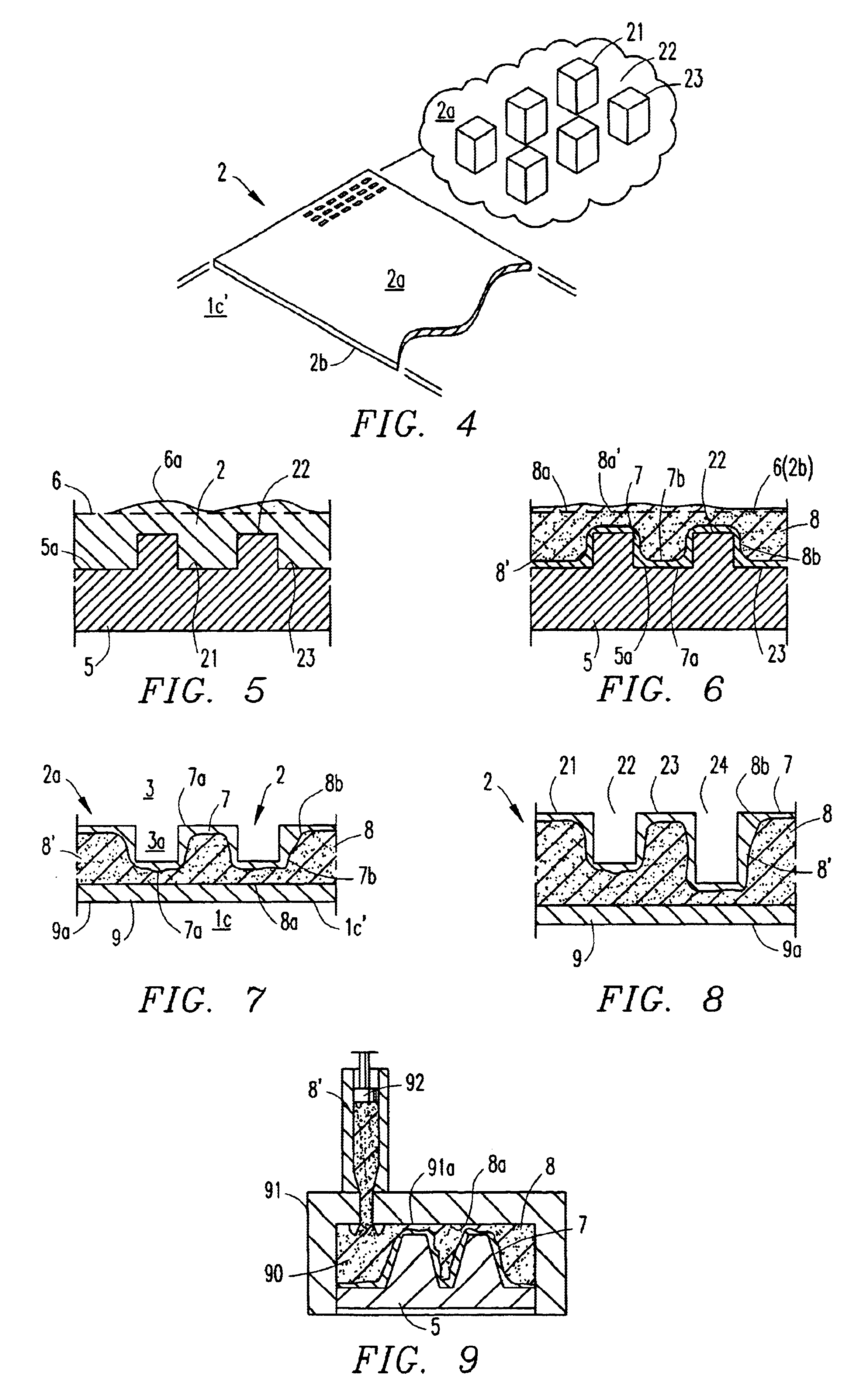Matrix and method of producing said matrix
a matrix and matrix technology, applied in the field of matrix and matrix production, can solve the problems of reducing the production time, affecting the production efficiency, and affecting the quality of the matrix, so as to reduce the production time, enhance the replication capacity, and produce more simply
- Summary
- Abstract
- Description
- Claims
- Application Information
AI Technical Summary
Benefits of technology
Problems solved by technology
Method used
Image
Examples
Embodiment Construction
[0130]The present invention relates to a method of producing a matrix 2, in particular a matrix 2 adapted for use in a compression moulding, embossing, injection moulding and / or other plastic element-producing press 1
[0131]One surface of the matrix 2 is given a negative microstructure 2a that can be replicated as a positive microstructure 3a on a plastic element 3 in the injection moulding press 1.
[0132]The method by means of which the matrix 2 is produced will be described in more detail below with reference to FIG. 6.
[0133]For the sake of simplicity, the following description assumes that solely the moveable mould half is provided with a matrix 2 that has a microstructure 2a, although the person skilled in this art will realise that the fixed mould half may also be provided with such a matrix.
[0134]Thus, FIGS. 1-3 illustrate schematically an injection moulding press I that includes an ejector rod 1a, a number (3) of ejector pins 1b, a moveable mould 1c and a fixed mould 1d.
[0135]...
PUM
| Property | Measurement | Unit |
|---|---|---|
| thickness | aaaaa | aaaaa |
| thickness | aaaaa | aaaaa |
| thickness | aaaaa | aaaaa |
Abstract
Description
Claims
Application Information
 Login to View More
Login to View More - R&D
- Intellectual Property
- Life Sciences
- Materials
- Tech Scout
- Unparalleled Data Quality
- Higher Quality Content
- 60% Fewer Hallucinations
Browse by: Latest US Patents, China's latest patents, Technical Efficacy Thesaurus, Application Domain, Technology Topic, Popular Technical Reports.
© 2025 PatSnap. All rights reserved.Legal|Privacy policy|Modern Slavery Act Transparency Statement|Sitemap|About US| Contact US: help@patsnap.com



